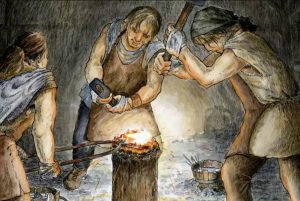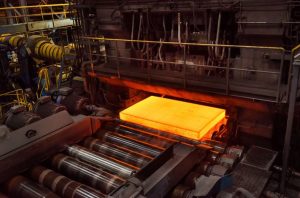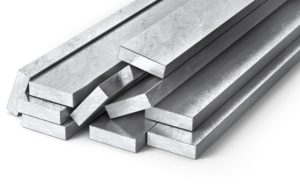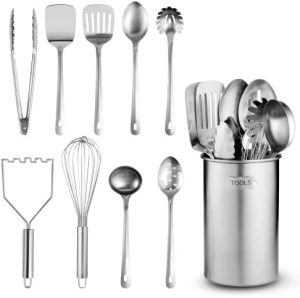Four Main Types of Steel and Their Characteristics
Table of Contents
Introduction
Around 6,000 years ago, humans learned to work with iron. Eventually, they developed steel, an alloy of iron, which has become the most widely used element in industry. Steel is used in a broad range of applications, including mechanical and electrical equipment, heavy construction materials, kitchen utensils, and more. Despite the diversity and extensive applications of steel, deciding on the appropriate type and method of use can sometimes be challenging.

Alloy steel is made primarily from iron, meaning it consists of a significant amount of iron combined with other elements like carbon (typically less than 2%) and various other elements. Steel is divided into four main categories. The properties of these groups vary based on the quantity and type of elements combined with iron, as well as the heating and cooling methods applied to the metal.


Carbon Steel
All steels contain carbon, but carbon steel is unique due to the absence of other alloying elements in its composition. Although this alloy contains only up to 2% carbon, its inherent nature makes carbon steel a strong and durable material, ideal for various applications.
Carbon steel is sometimes mistaken for cast iron, another iron alloy similar to steel. However, cast iron has a carbon content above 2%, giving it different mechanical and chemical properties compared to steel. Cast iron contains 2 to 3.5% carbon, which gives it a rough texture and a more brittle nature.
Although carbon steel is composed of alloyed metals, it is not classified as an alloy steel due to the lack of additional alloying elements in its composition. This simplicity contributes to the popularity of carbon steel, which accounts for about 90% of total steel production.
Different Types
Carbon steel can be divided into three categories: low carbon, medium carbon, and high carbon. Each type retains the inherent strength of carbon, but its primary purpose changes with increasing carbon content.
- Low Carbon: The most common and least expensive type. Due to its high flexibility, it easily forms under tension and pressure. It is used in the production of wires, screws, and pipes.
- Medium Carbon: With a carbon content between 0.31% and 0.60%, this type offers higher strength but less ductility than low carbon steel. Medium carbon steel is found in gears and railway tracks.
- High Carbon: The hardest type, containing over 0.61% carbon, and is often used to produce masonry nails and sharp cutting tools like trencher blades. This type of steel typically does not contain more than 2% carbon.

Stainless Steel
This type of steel is commonly known for its role in the production of kitchen equipment and medical instruments, but its applications extend far beyond these areas. Chromium is the alloying element that gives stainless steel its distinctive shine. Chromium is resistant to oxidation, which helps prevent rusting and thus extends the metal’s lifespan. Typically, stainless steel contains more than 10.5% chromium, and sometimes up to 30% in specific applications.
Different Types
Kitchen, medical, and automotive applications are common uses for this category, but stainless steel is also highly valuable for many other purposes. It is divided into four subcategories, each with a distinct purpose:
- Martensitic Alloys
- Ferritic Alloys
- Austenitic Alloys
- Duplex Alloys

Alloy Steel
This category of steel includes a wide range of alloys with varying properties. In the construction of shipping containers, a complex alloy with multiple elements is combined to create a durable and resilient product. Silicon is often not considered a primary component of steel, but its magnetic properties make it an excellent addition for most large machinery.
Some elements that combine with iron and carbon to form alloys are also found in tool steels, such as cobalt, tungsten, and molybdenum. These are exceptionally hard metals valued for their impact resistance and cutting abilities.
Types of Alloy Steel
The versatile potential of alloy steel allows for high customization for specific applications. However, due to the secondary elements involved, such as carbon or chromium, which are not always readily available, certain alloy steels can be costly.
Some of the most common types of alloy steels include:
- Aluminum
- Copper
- Manganese
- Molybdenum
- Silicon
- Vanadium

Tool Steel
This group of steel is highly specialized and is primarily used in the production of machinery for tool manufacturing. Annealing—a process of applying high heat, rapid cooling, and then reheating—creates tool steel that is extremely hard and heat-resistant. Tool steels are commonly used in high-impact environments and are highly abrasive.
Different Types
Various manufacturing tools require a wide range of tool steels. This category is utilized in different ways to best meet the production needs of specific tools. The added elements in this steel type determine its suitability for particular applications.
- Air-Hardening: High chromium content allows this steel to withstand high temperatures without distortion.
- Water-Hardening: This steel rapidly cools with water. It is the most cost-effective type, often used to produce common tools.
- Oil-Hardening: Known for its high slip resistance, oil-hardened tool steel is used to make knives and scissors.
- High-Speed: High-speed tool steel is extremely abrasive and impact-resistant, found in drill bits and power saws.
- Hot-Working: This steel can endure extreme heat and is used in forging and casting.
- Impact-Resistant: Adding a small amount of carbon, silicon, and molybdenum hardens this steel, making it suitable for punch and rivet tools.

